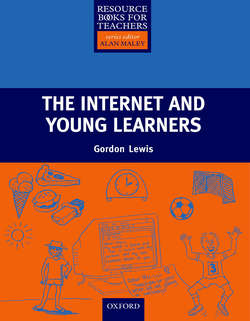Читать книгу The Internet and Young Learners - Gordon Lewis - Страница 5
Foreword
ОглавлениеPerhaps the aptest metaphor for the Internet is the jungle. The jungle provides an endless source of sustenance and delight to those who know their way in it. To those who do not, it is a dark and impenetrable maze, full of danger and unpredictable menace. In like manner, the Internet offers infinite resources to those who can navigate its limitless pathways. For those unfamiliar with it however, it can be a threatening presence, characterized by total lack of structure, full of potential predators.
In order to make best use of the Internet’s resources, those teachers unfamiliar with it need reassurance. This reassurance may be in the form of what to do and where to go to find what they are looking for. They also need to be reassured that they, and their learners (especially young learners), will be safe from some of the less palatable dangers lurking in the Internet, and to know that they can harness it to their pedagogical purposes in ways appropriate to the age and level of their learners.
This book offers precisely this kind of reassurance. It begins with a series of practical activities to familiarize learners (and teachers too perhaps!) with the way the Internet works. It moves on to activities involving communication via email. The third section offers activities to do with retrieving information from the Internet. Finally, there are activities designed to help learners build their own websites. The activities are clearly described and user-friendly, and will go a long way towards dispelling the misgivings many teachers feel about computers and the Internet as a resource.
In addition there is a rich array of useful Internet addresses. This is backed up by the book’s own website (accessed via the Resource Books for Teachers site http://www.oup.com/elt/teacher/rbthttp://www.oup.com/elt/teacher/rbt), which is regularly updated.
Much has been made of the power of information technology in language education. This has occasionally led to a blind enthusiasm for technology without a corresponding concern for its appropriate use. This book will certainly help redress this imbalance. It views the Internet as a learning resource, to be used judiciously alongside other resources, rather than as a miracle-working solution to all learning problems. This is greatly to be welcomed.
Alan Maley
